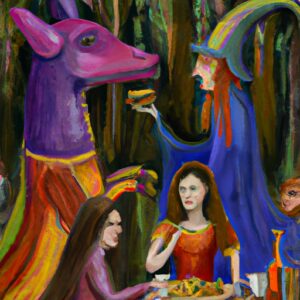How to form the past of the subjunctive?
The congiuntivo passato or the past of the subjunctive behaves like the present of the subjunctive, with the obvious difference that it’s used to talk about the past.
Its structure is quite straightforward since it’s similar to the passato prossimo, which combines the verb essere or the verb avere and the past participle.
The only difference is that this time the verbs essere and avere are in the present of the subjunctive.
- avere in the present of the subjunctive + past participle
- essere in the present of the subjunctive + past participle
How to conjugate avere and essere in the present subjunctive?
In case you don’t remember, here are the verbs essere and avere are in the present of the subjunctive:
- Avere: io abbia, tu abbia, lui/lei abbia, noi abbiamo, voi abbiate, loro abbiano.
- Essere: io sia, tu sia, lui/lei sia, noi siamo, voi siate, loro siano.
If you don’t know when to use avere and when to use essere, the following tip will help you:
- Avere is followed by most verbs, such as comprare (to buy), mangiare (to eat), leggere (to read), etc.
- Essere is followed by the verbs essere and stare, and by all verbs that deal with movement like rimanere (to stay/to remain), scappare (to escape), salire (to go up), scendere (to go down), partire (to depart or leave), andare (to go), venire (to come), etc.
Remember the past participles are those words that end in –ato, –uto, and –ito, like mangiato, saputo, and dormito.
There are many past participles that are irregular. Here’s a list of some of them: aperto, bevuto, chiesto, detto, fatto, letto, perso, rotto, scritto, stato, venuto, visto.
Keep in mind that the past participle of the verbs that go with essere agree in number and gender with the subject.
Practice with Quizlet
Here's a set of flashcards and quizzes to practice this grammar topic.The past of the subjunctive: examples
Remember we use the subjunctive to talk about hopes, hypotheses, desires, fears, possibilities, and doubts.
It’s usually preceded by penso che (I think that), credo che (I believe that), spero che (I hope that), è possibile che (it’s possible that), and sembra che (it seems that or it seems like), among others.
Let’s have a look at some examples:
Credo che tu abbia comprato una bellissima macchina.
I believe that you bought a very beautiful car.
Spero che lei abbia mangiato tutto.
I hope she ate everything.
È possible che voi abbiate dimenticato tutto.
It’s possible that you forgot everything.
Credo che Maria sia andata a dormire.
I believe Maria went to sleep.
Non ti sembra che loro siano partiti troppo presto?
Don’t you think they left too early?
Spero che voi siate arrivate in tempo.
I hope you arrived on time.









